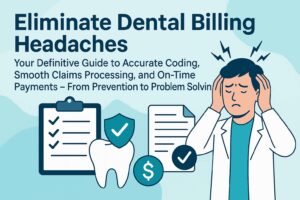
HIPAA Violation Consequences: What Every Healthcare Professional Should Know

The Health Insurance Portability and Accountability Act (HIPAA) sets strict standards for protecting patient data, and breaching these rules can lead to severe repercussions. From financial penalties to reputational damage, the impact of HIPAA violations can be far-reaching and long-lasting for healthcare providers, insurers, and their business associates.
This article delves into the various aspects of HIPAA violation consequences, providing a comprehensive overview of the rules and regulations, how to identify potential breaches, and the role of the Office for Civil Rights (OCR) in enforcement. It also explores strategies to lessen the impact of violations, build a culture of compliance, and maintain the trust of patients and stakeholders. By gaining a deeper understanding of these issues, healthcare professionals can better protect themselves and their organizations from the serious ramifications of HIPAA non-compliance.
Overview of HIPAA Rules and Regulations
The Health Insurance Portability and Accountability Act (HIPAA) establishes a comprehensive framework to protect individuals’ health information. This section provides an overview of the key components of HIPAA: the Privacy Rule, the Security Rule, and the Breach Notification Rule.
Privacy Rule
The Privacy Rule sets national standards for the protection of individuals’ medical records and other personal health information . It applies to health plans, health care clearinghouses, and health care providers that conduct certain health care transactions electronically, collectively known as “covered entities” .
The rule safeguards all “individually identifiable health information” held or transmitted by a covered entity or its business associate, in any form or media, whether electronic, paper, or oral. This information is referred to as “protected health information” (PHI) .
Key aspects of the Privacy Rule include:
Limiting the use and disclosure of PHI: Covered entities may only use or disclose protected health information as permitted by the rule or as authorized in writing by the individual .
Minimum necessary principle: Covered entities must make reasonable efforts to use, disclose, and request only the minimum amount of protected health information needed to accomplish the intended purpose .
Individual rights: The rule grants individuals rights over their protected health information, including the right to examine and obtain a copy of their health records, and to request corrections .
Security Rule
The Security Rule operationalizes the protections outlined in the Privacy Rule by addressing the technical and non-technical safeguards that covered entities must implement to secure individuals’ electronic protected health information (e-PHI) .
The Security Rule requires covered entities to maintain reasonable and appropriate administrative, technical, and physical safeguards for protecting e-PHI. Specifically, covered entities must:
- Ensure the confidentiality, integrity, and availability of all e-PHI they create, receive, maintain or transmit.
- Identify and protect against reasonably anticipated threats to the security or integrity of the information.
- Protect against reasonably anticipated, impermissible uses or disclosures.
- Ensure compliance by their workforce .
Key components of the Security Rule include:
- Risk Analysis: Covered entities must perform a risk analysis as part of their security management processes .
- Access Control: Implementing policies and procedures for authorizing access to e-PHI based on the user’s role .
- Audit Controls: Implementing mechanisms to record and examine access and other activity in information systems containing e-PHI .
Breach Notification Rule
The Breach Notification Rule requires HIPAA covered entities and their business associates to provide notification following a breach of unsecured protected health information . A breach is defined as an impermissible use or disclosure under the Privacy Rule that compromises the security or privacy of the PHI .
Key aspects of the Breach Notification Rule include:
Notification Requirements: Following a breach of unsecured PHI, covered entities must notify affected individuals, the Secretary of Health and Human Services, and in some cases, the media .
Timeframe: Notifications must be provided without unreasonable delay and no later than 60 days following the discovery of a breach .
Breach Assessment: An impermissible use or disclosure of PHI is presumed to be a breach unless the covered entity demonstrates that there is a “low probability” that the PHI has been compromised .
Risk Assessment: Covered entities must use a four-factor test to assess the probability of compromise: the nature and extent of the PHI involved, the unauthorized person who used the PHI or to whom the disclosure was made, whether the PHI was actually acquired or viewed, and the extent to which the risk to the PHI has been mitigated .
Understanding these HIPAA rules and regulations is crucial for healthcare professionals to ensure compliance and protect patient information effectively. One Dental Billing, a dental billing company, can assist healthcare providers in navigating these complex regulations and maintaining HIPAA compliance in their billing practices.
Identifying HIPAA Violations
HIPAA violations can occur in various forms, and healthcare professionals must be vigilant in recognizing potential breaches. Understanding how to identify these violations is crucial for maintaining compliance and protecting patient information.
Red Flags for Potential Violations
Several signs may indicate a potential HIPAA violation. One common red flag is unauthorized access to patient information. If someone is accessing patient data without proper authorization or if a patient complains about their information being accessed without consent, this could signal a HIPAA violation .
Improper handling of patient information is another significant concern. For instance, if patient files are left unattended in open areas where unauthorized individuals can view them, or if patient information is found in dumpsters or recycling bins, these situations could constitute HIPAA violations .
Healthcare professionals should also be alert to data breaches. When a breach occurs, affected individuals should receive a breach notification detailing the nature of the breach and the number of patients impacted .
Self-Auditing Processes
Regular self-auditing is essential for maintaining HIPAA compliance. Organizations should develop a comprehensive HIPAA audit checklist that covers all applicable standards of the HIPAA Administrative Simplification Regulations .
Key components of a self-audit include:
- Verifying compliance with operating rules for eligibility, claims status, and electronic funds transfer/remittance advice.
- Testing transactions for compliance using the Administrative Simplification Enforcement and Testing Tool (ASETT).
- Documenting policies, procedures, and test results as required for compliance reviews .
It’s important to note that in the year leading up to April 2022, 51% of organizations failed compliance reviews and were issued corrective action plans . This statistic underscores the importance of thorough self-auditing processes.
Self-assessments should focus on three major components:
- Compliance with the Privacy Rule and its permitted uses and disclosures of Protected Health Information (PHI).
- Compliance with the Security Rule’s risk analysis and safeguard requirements.
- Readiness for Breach Notification Rule compliance in case of a data breach .
Reporting Mechanisms
Establishing clear reporting mechanisms is crucial for addressing potential HIPAA violations promptly. Healthcare employees should be trained on how to report suspected violations and to whom they should direct their reports .
The process for reporting HIPAA violations typically involves the following steps:
Internal Reporting: Employees should report potential violations to their supervisor or the organization’s HIPAA Privacy Officer. The contact details for the Privacy Officer are usually found in the Notice of Privacy Practices .
Investigation: The reported violation must be investigated internally by the Covered Entity or Business Associate to determine its severity and whether it qualifies as a data breach .
Escalation: If no action is taken after reporting to a supervisor, employees should escalate the report to the compliance officer. If the compliance officer fails to act, the report should be further escalated to the Office for Civil Rights (OCR) .
External Reporting: In cases of serious violations, including potential criminal violations or widespread neglect of HIPAA Rules, reports should be made directly to the OCR .
It’s important to note that HIPAA prohibits retaliation against individuals who file complaints . This protection encourages employees to report violations without fear of repercussions.
One Dental Billing, a dental billing company, can assist healthcare providers in establishing effective reporting mechanisms and training staff on proper procedures for identifying and reporting potential HIPAA violations.
By implementing robust identification, self-auditing, and reporting processes, healthcare organizations can significantly enhance their HIPAA compliance efforts and better protect patient information.
The Role of OCR in HIPAA Enforcement
The Office for Civil Rights (OCR), an agency within the U.S. Department of Health and Human Services, plays a crucial role in enforcing the HIPAA Privacy, Security, and Breach Notification Rules. The OCR has the authority to investigate complaints, conduct compliance reviews, and take action against entities that violate HIPAA regulations .
Investigation Procedures
The OCR carefully reviews all complaints it receives. To be eligible for investigation, a complaint must meet specific criteria:
- The alleged action must have occurred within the past six years.
- The complaint must be filed against a covered entity or business associate subject to HIPAA Rules.
- The complaint must allege an activity that, if proven true, would violate the HIPAA Rules.
- The complaint must be filed within 180 days of when the complainant knew or should have known about the alleged violation .
When investigating a complaint, the OCR follows a structured process:
- Review of the complaint to ensure it meets the necessary conditions.
- Investigation of the alleged violations.
- Resolution through corrective actions, technical assistance, or other means.
Since the Privacy Rule’s compliance date in April 2003, the OCR has received over 361,498 HIPAA complaints and has resolved 99% of these cases (358,601) . The agency has successfully enforced HIPAA Rules by applying corrective measures in all cases where an investigation indicated noncompliance .
Compliance Reviews
In addition to investigating complaints, the OCR also conducts compliance reviews to ensure that covered entities and their business associates adhere to HIPAA regulations. These reviews may be initiated based on various factors, including:
- Reports of potential violations.
- Random selection for audit.
- Follow-up on previous investigations or corrective actions.
The OCR has initiated over 1,188 compliance reviews since the implementation of the Privacy Rule . These reviews have resulted in systemic changes that affect all individuals served by the entities under scrutiny.
During a compliance review, the OCR may examine various aspects of an entity’s HIPAA compliance, including:
- Risk analysis and management processes.
- Policies and procedures for protecting PHI.
- Employee training programs.
- Incident response and breach notification protocols.
Voluntary Resolution Agreements
When the OCR identifies potential HIPAA violations, it may enter into voluntary resolution agreements with covered entities or business associates. These agreements are settlement agreements that outline specific obligations and reporting requirements for the entity, typically over a three-year period .
Key aspects of voluntary resolution agreements include:
- The entity agrees to perform certain obligations and make reports to HHS.
- HHS monitors the entity’s compliance with its obligations during the agreement period.
- The agreement may include the payment of a resolution amount .
Notable examples of recent voluntary resolution agreements include:
- Agreement with Montefiore on November 16, 2023.
- Agreement with UnitedHealthcare Insurance Company on August 24, 2023.
- Agreement with Green Ridge Behavioral Health, LLC on October 30, 2023 .
If a satisfactory resolution cannot be reached through informal means or a resolution agreement, the OCR may impose civil money penalties (CMPs) for noncompliance . To date, the OCR has settled or imposed civil money penalties in 145 cases, resulting in a total of $142,663,772 .
One Dental Billing, a dental billing company, can assist healthcare providers in maintaining HIPAA compliance and navigating the complexities of OCR investigations and compliance reviews.
Mitigating the Impact of HIPAA Violations
Immediate Response Strategies
When a HIPAA violation occurs, swift action is crucial to minimize its impact. The first step is to address the immediate effects of the issue . For instance, if there’s a data breach, this might involve securing the compromised systems and notifying affected patients. A thorough investigation should be conducted to understand what happened and why . This may include reviewing security footage, interviewing staff, or examining electronic logs.
Documentation is a critical aspect of the immediate response. The issue, how it was discovered, the initial response, and the investigation findings should be carefully recorded . This documentation is essential for transparency and future reference. It’s also important to communicate with all relevant stakeholders, including staff, patients, and possibly regulatory bodies, about the issue and how it should be handled . When communicating sensitive information, it’s crucial to use secure methods such as HIPAA-compliant email to prevent further unauthorized access.
Notification Requirements
HIPAA’s Breach Notification Rule requires covered entities to notify patients when their unsecured protected health information (PHI) is impermissibly used or disclosed in a way that compromises its privacy and security . The notification process involves several steps and considerations:
Timing: Notifications must be provided without unreasonable delay and no later than 60 calendar days following the discovery of a breach .
Content: The notification should include a brief description of what happened, including the dates of the breach and its discovery, the types of unsecured PHI involved, steps individuals should take to protect themselves, and what the covered entity is doing to investigate and mitigate the situation .
Method: For breaches affecting 500 or more individuals, the covered entity must notify the Secretary of the U.S. Department of Health and Human Services (HHS) and, in some cases, the media .
Business Associates: If a business associate experiences a breach, they must notify the covered entity without unreasonable delay and no later than 60 days from discovery .
Implementing Corrective Measures
After addressing the immediate impact and fulfilling notification requirements, it’s crucial to implement corrective measures to prevent future violations. This process typically involves developing a Corrective Action Plan (CAP), which is often required by the Office for Civil Rights (OCR) following a HIPAA violation .
Key elements of implementing corrective measures include:
Root Cause Analysis: Conduct a thorough investigation to identify the underlying causes of the breach or violation .
Policy Review and Update: Review existing policies and procedures in light of the issue and update them as necessary to prevent future occurrences .
Training and Education: Provide additional training or education to staff where necessary to address any knowledge gaps that may have contributed to the violation .
Monitoring and Auditing: Implement a plan to monitor the effectiveness of the corrective actions over time and conduct regular audits to ensure protocols are followed correctly .
Risk Assessments: Perform regular risk assessments to proactively identify and mitigate potential issues .
Culture of Compliance: Foster a culture that prioritizes adherence to protocols and encourages reporting of potential issues or non-compliance .
By implementing these strategies, healthcare organizations can effectively mitigate the impact of HIPAA violations and strengthen their overall compliance efforts. One Dental Billing, a dental billing company, can assist healthcare providers in developing and implementing these corrective measures, ensuring robust HIPAA compliance in their billing practices.
Building a Culture of HIPAA Compliance
Building a culture of HIPAA compliance is essential for healthcare organizations to protect patient privacy and maintain trust. This process involves several key components that work together to create a comprehensive approach to compliance.
Leadership Commitment
The foundation of a strong HIPAA compliance culture starts with leadership commitment. Effective HIPAA compliance begins with strong leadership dedicated to privacy and security . Leaders play a pivotal role in setting expectations and fostering commitment to HIPAA standards throughout the organization . This commitment is crucial for several reasons:
- Easier access to budget and resources
- Support for a cultural shift or adjustment
- Organizational sentiment from the top
- Program longevity
Leadership should ensure that the right people are in the right positions to plan, organize, and execute an organization-wide holistic HIPAA compliance strategy . This includes appointing knowledgeable Privacy and Security Officers supported by a skilled compliance team .
Ongoing Staff Education
HIPAA training is a key element of compliance, ensuring that all employees and relevant personnel understand the regulations, their responsibilities, and the potential risks associated with mishandling protected health information (PHI) . Comprehensive training programs educate staff on:
- The importance of privacy and security measures
- Proper handling of PHI
- Protocols for reporting and addressing potential breaches or violations
Regular and comprehensive education on HIPAA regulations is essential for all healthcare personnel . It’s recommended that healthcare workers take personal responsibility for their HIPAA knowledge and how it applies to their roles . Employers should provide two types of HIPAA training:
- HIPAA Privacy Rule training on policies and procedures (required by 45 CFR § 164.530)
- Security and awareness training (required by 45 CFR § 164.308)
To address potential gaps in knowledge, organizations should consider offering online HIPAA training modules that allow staff to focus on areas where their knowledge is lacking .
Policies and Procedures
Well-documented policies and procedures aligned with HIPAA requirements are essential for maintaining compliance . These documents should cover areas such as:
- Data access and sharing
- Breach response
- Workforce training
Policies and procedures help simplify HIPAA’s complex regulatory jargon into documents that are easier for employees to understand . They increase the likelihood that employees will pursue the same goals, with the same values, in the same ways across the organization .
To ensure policies and procedures stay up to date, businesses should appoint a team to regularly review, approve, and finalize any changes or updates . It’s crucial to distribute these documents to staff and create a staggered communication plan to convey this information without overwhelming employees .
Technology Solutions
Implementing appropriate technology solutions is crucial for HIPAA compliance. The Security Rule lists specifications for technology to comply with HIPAA, including:
- Encryption of all Protected Health Information (PHI) at rest and in transit
- Unique User Identifiers for each authorized medical professional
- Automatic log-off features to prevent unauthorized access
Healthcare organizations should consider implementing secure messaging solutions, such as secure texting, which enables medical professionals to maintain the speed and convenience of mobile devices while confining HIPAA-related activities to a private communications network .
By focusing on these key areas – leadership commitment, ongoing staff education, comprehensive policies and procedures, and appropriate technology solutions – healthcare organizations can build a strong culture of HIPAA compliance. This holistic approach not only helps protect patient privacy but also enhances overall operational efficiency and trust within the healthcare ecosystem.
Conclusion
Understanding the consequences of HIPAA violations is crucial for healthcare professionals to protect patient privacy and maintain trust. This article has explored various aspects of HIPAA compliance, from the rules and regulations to identifying violations, the role of OCR in enforcement, and strategies to mitigate the impact of breaches. By implementing robust compliance measures, healthcare organizations can better safeguard patient information and avoid the severe penalties associated with violations.
Building a culture of HIPAA compliance requires ongoing commitment from leadership, continuous staff education, well-documented policies, and appropriate technology solutions. One Dental Billing, a dental billing company, can assist healthcare providers in navigating these complex requirements and maintaining compliance in their billing practices. By prioritizing HIPAA compliance, healthcare professionals can ensure the confidentiality, integrity, and availability of patient data while providing high-quality care.
FAQs
What are the repercussions for a healthcare professional who breaches HIPAA regulations?
Penalties for violating HIPAA can vary from fines and corrective action plans to imprisonment. The Office for Civil Rights (OCR) determines the severity of penalties based on the nature of the violation and the violator’s awareness of the breach. Violations can concern the Protected Health Information (PHI) of just one individual.
What are some potential penalties for violating HIPAA rules?
Individuals who knowingly obtain or disclose individually identifiable health information in contravention of the Privacy Rule could face criminal penalties, including fines up to USD 50,000 and imprisonment for up to one year.
In what ways does HIPAA impact healthcare providers?
Violations of HIPAA compliance can lead to significant repercussions for healthcare organizations, including hefty fines which can range from thousands to millions of dollars, depending on the severity of the violation and how the organization handles the aftermath.
How could a HIPAA violation affect your career?
A HIPAA breach could lead to disciplinary actions such as suspension pending investigation, depending on the violation’s nature. In severe cases, it might even result in termination of employment.
Contact Us
Phone: 908-357-1515
111 Town Square Pl, Suite 1203 Jersey City, NJ 07310












